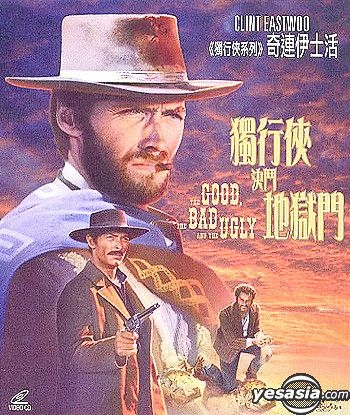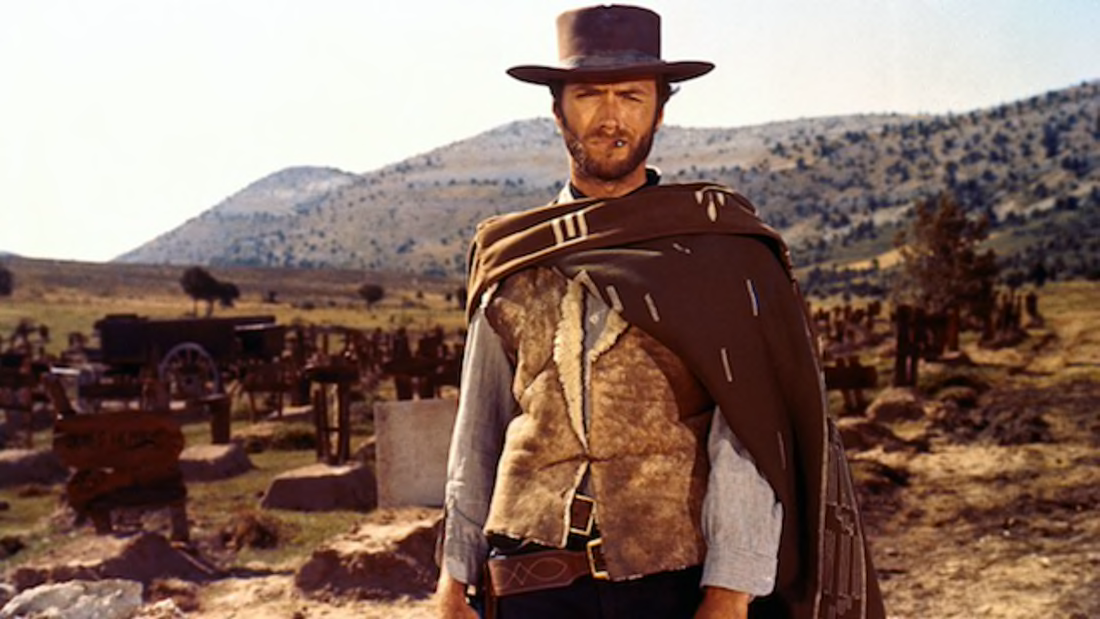


Consider the legless beggar who uses his arms to propel himself into a saloon, shouting, "Hand me down a whiskey!" Instead of tame Hollywood extras from central casting, we get locals who must have been hired near the Spanish locations-men who look long-weathered by work and the sun. Perhaps it is the subtly foreign flavor of the spaghetti trilogy, and especially the masterpiece "The Good, the Bad and the Ugly," that suggests the films come from a different universe than traditional Westerns. There was even a pathetic attempt to make the films seem more American I learn from the critic Glenn Erickson that Leone was credited as "Bob Robertson" in the early prints of "Fistful," and composer Ennio Morricone, whose lonely, mournful scores are inseparable from the films, was "Dan Savio." Even Eastwood's character, the famous Man With No Name, was an invention of the publicists he was called Joe in the first movie, Manco in the second, and Blondie in the third. Looking up my old review, I see I described a four-star movie but only gave it three stars, perhaps because it was a "spaghetti Western" and so could not be art.īut art it is, summoned out of the imagination of Leone and painted on the wide screen so vividly that we forget what marginal productions these films were-that Clint Eastwood was a Hollywood reject, that budgetary restraints ($200,000 for "Fistful") caused gaping continuity errors, that there wasn't a lot of dialogue because it was easier to shoot silent and fill the soundtrack with music and effects. I responded strongly, but had been a movie critic less than a year, and did not always have the wisdom to value instinct over prudence.


I saw it sitting in the front row of the balcony of the Oriental Theatre, whose vast wide screen was ideal for Leone's operatic compositions. When the movie opened in America in late 1967, not long after its predecessors "A Fistful of Dollars" (1964) and " For a Few Dollars More" (1965), audiences knew they liked it, but did they know why? Leone cares not at all about the practical or the plausible, and builds his great film on the rubbish of Western movie cliches, using style to elevate dreck into art. And the way men walk down a street in full view and nobody is able to shoot them, maybe because they are not in the same frame with them. And a moment in a cemetery when a man materializes out of thin air even though he should have been visible for a mile. There is a moment, for example, when men do not notice a vast encampment of the Union Army until they stumble upon it.


 0 kommentar(er)
0 kommentar(er)
